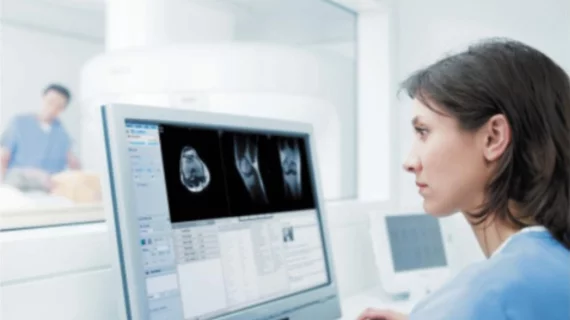Women continue to be underrepresented in radiology workforce throughout US
As radiologists continue to embrace a more tech-savvy generation of medical students, adapt to life alongside artificial intelligence (AI) and churn out practice-changing studies, just one thing is missing, researchers wrote in the Journal of the American College of Radiology this May: more women.
Women are drastically underrepresented in radiology, first author Andrew B. Rosenkrantz, MD, MPA, and colleagues wrote. That’s not news—previous studies have found less than a quarter of radiologists practicing in the U.S. are women, and that rate has remained steady, leaving the country at the bottom of the global list when it comes to diversity.
“Diversity among healthcare practitioners is important for representing the increasingly diverse U.S. patient population they serve,” Rosenkrantz et al. said. “Radiology, however, has a long-standing history of having among the lowest female representation among all medical specialties.”
It’s important to change that, the authors said, since diversity promotes broader experiences, different perspectives and new innovations. Combined, those factors mean higher performance.
To understand what’s keeping female representation so low in radiology, Rosenkrantz, of NYU Langone Medical Center in New York, and his team pulled gender, location and practice affiliation information for female physicians in the Medicare Physician Compare database. Both radiologists themselves and non-radiologists were included in the retrospective trial.
The researchers found that, compared to a 46.6 percent female prevalence in non-radiologists, women made up just 23.1 percent of female radiologists, which is consistent with past research. Rates varied from no female radiologists in a community to only female radiologists, but at the state level, more women were practicing in the Northeast and Mid-Atlantic.
The West and Midwest saw the lowest prevalence, the authors said, reaching just 11.7 percent in Idaho compared with Washington, D.C.’s 39.3 percent.
County-level population and urban setting, median household income, college education, mammography screening rates and Democratic voting in the 2016 presidential election were all linked to slight increases in female prevalence, Rosenkrantz et al. reported, and women were nearly 12 percent more likely to be employed in academic versus non-academic radiology environments.
“Although the representation of women in radiology was higher than in the surgical specialties we selected for comparison, women were underrepresented in comparison with both primary care specialities, as well as all non-radiologists in aggregate,” the authors wrote.
The work paves the way for further study, Rosenkrantz and colleagues said, including in identifying actual strategies to reduce disparities between the sexes.
“Our insights into the nature of the variation of female representation in the radiologist workforce could help in designing and driving initiatives to reduce disparities and more actively engage women in all facets of the specialty,” they wrote. “Clearly, more work is necessary.”

